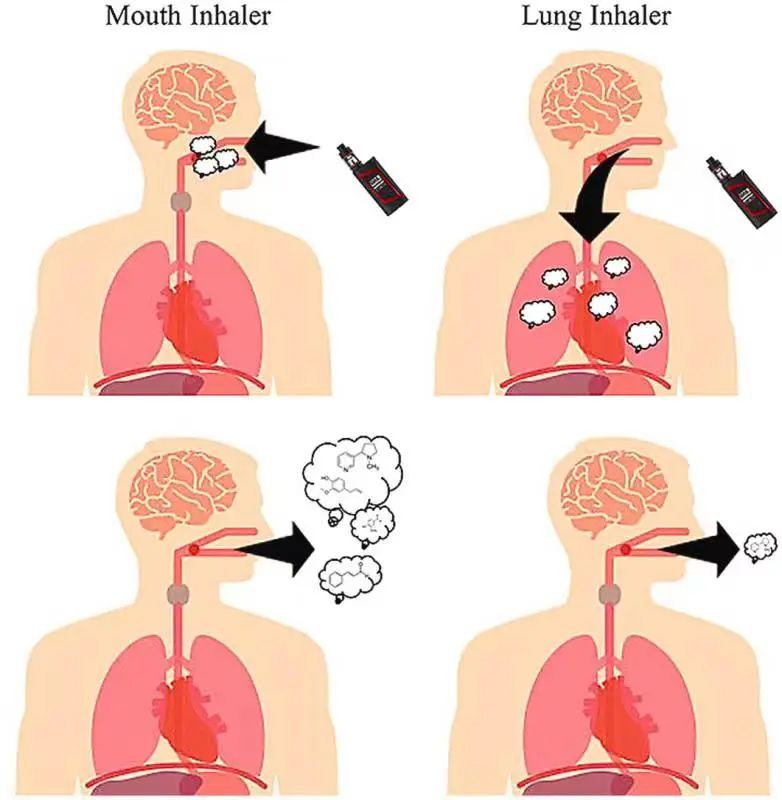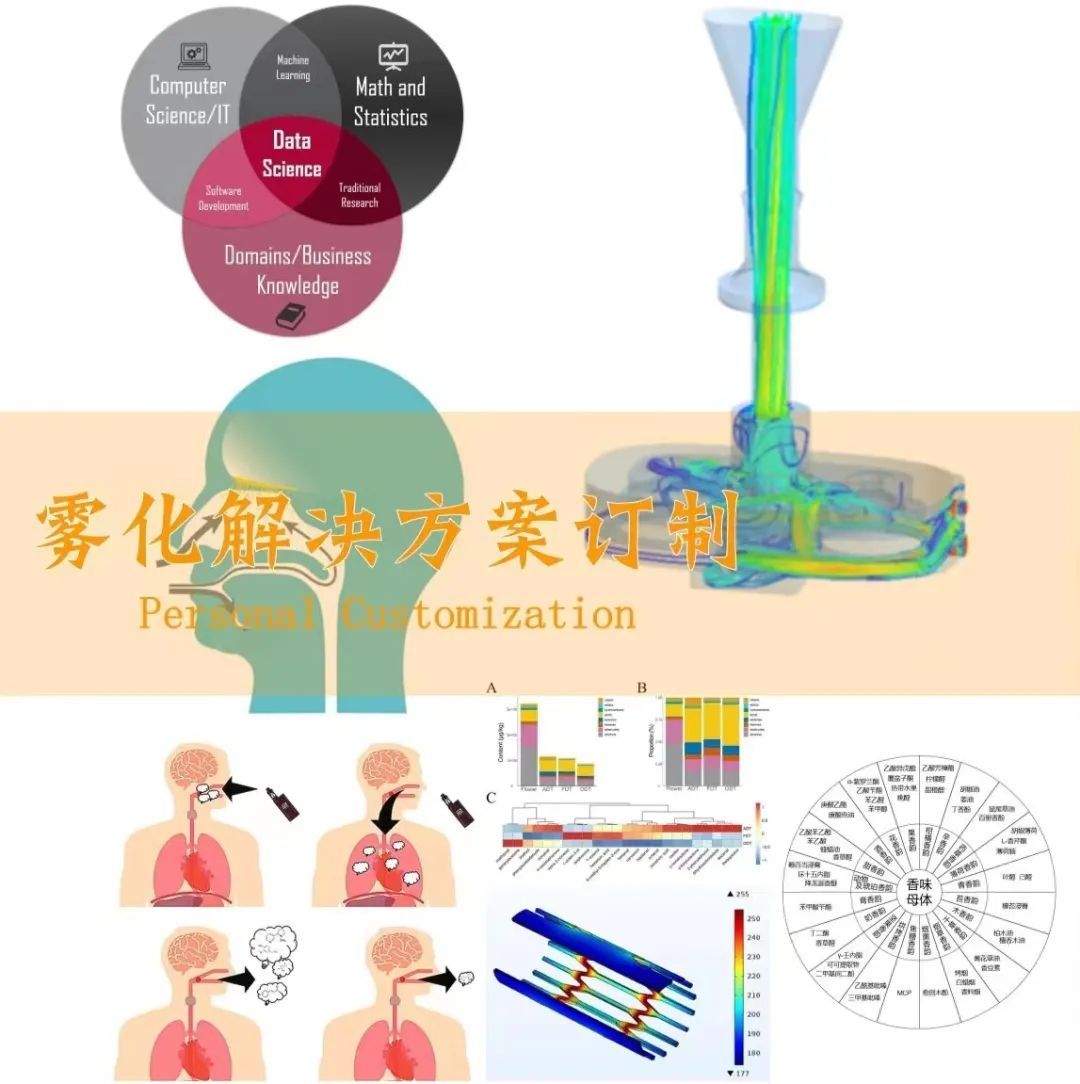In the last issue, we learned about the basic parameters of aerosols and their movement and deposition characteristics. In this issue, we will discuss the movement and deposition characteristics of aerosols in the respiratory tract and their related sensory experiences.
Topic 3: Movement, Deposition Characteristics of Aerosols and Sensory Experience
(1) What Sensory Experiences Can Aerosols Bring?
① Aroma. The Electronic Cigarette Sensory Evaluation Guide (Part Two): Odor Perception and Olfactory Fatigue introduced how we use our sense of smell to perceive the aroma in the aerosol when inhaling. Those interested can click to visit the previous discussion.
② Taste. The taste buds in our mouth receive stimulation and further form taste perception. Taste buds are mainly concentrated on the tongue but are also found on the inner surfaces of the oral cavity and throat. The five basic tastes that are widely recognized are sweet, sour, bitter, salty, and umami.
③ Coolness. The cooling agents in aerosols do not actually lower the temperature in our respiratory tract but directly trigger temperature receptors to produce a cooling sensation. In addition to the mouth and nasal cavity, our throat and parts of the respiratory tract can also generate a feeling of coolness.
④ Irritation. This mainly refers to the "throat hit" sensation, which is caused by nicotine (or nicotine salts) stimulating the mucous membranes of the respiratory tract and throat. It is usually described as a kind of irritation.
⑤ Visual, auditory (the sound produced by the atomizer when generating aerosols), etc. These are not discussed in this series.
(2) Movement and Deposition of Aerosols in the Respiratory Tract
The previous article introduced the particle size distribution of aerosol deposition in the respiratory tract. This issue will set aside specific particle size values and analyze the sensory experiences that aerosols bring to us from an overall perspective. Therefore, in this article, larger aerosols are referred to as large particles, and smaller aerosols as small particles, with large and small being relative concepts.
As shown in Figure 1, the two images on the left represent the inhalation and exhalation processes of aerosols under the "small cycle" inhalation method; the two images on the right represent the "large cycle" inhalation method.
Figure 1: Schematic Diagram of Aerosol Inhalation and Exhalation
(Source: https://doi.org/10.1016/j.chemosphere.2021.131494)
When using the small cycle inhalation method, aerosols only pass through the mouth (along with a small part of the upper respiratory tract); when using the large cycle method, aerosols go through the entire respiratory system.
(3) How the Movement and Deposition of Aerosols Affect Sensory Experience
① Aroma.
When using the small cycle inhalation, both large and small particles briefly stay in the mouth before being exhaled through the nose. The majority of aerosols will pass through the olfactory receptors, and the nose will experience a very intense aroma. When using the large cycle inhalation, some large particles deposit in the mouth, and the rest of the aerosols pass through the respiratory tract, gradually decreasing until they reach the lungs, after which the lungs contract to expel the aerosols through the nose. Because aerosols deposit at various places in the respiratory tract, the aroma perceived by the nose will be weaker than that of the small cycle, given the same amount of inhalation.
② Taste.
When using the small cycle inhalation, since aerosols linger longer in the mouth, the perception of sweet and sour tastes on the tongue will be more pronounced, as will the perception of bitterness. Therefore, this method of inhalation is more sensitive when judging whether the aerosol is "bitter". When using the large cycle inhalation, some small particles enter the throat and lungs through the respiratory tract, reducing the amount of aerosol contacting the tongue and oral cavity, thus weakening the taste perception compared to the small cycle. Additionally, whether "umami" can be perceived through electronic cigarette aerosols is also very intriguing.
③ Coolness.
When using the small cycle inhalation, only the nose and mouth will produce a cooling sensation; when using the large cycle inhalation, the cooling agents carried by the aerosols can activate temperature receptors in the mouth, nose, throat, and parts of the respiratory tract, thereby generating a cooling sensation. Therefore, the large cycle can effectively evaluate the coolness of the aerosol from an overall perspective.
④ Irritation.
When using the small cycle inhalation, it is impossible to feel the dominant irritation in the throat; when using the large cycle inhalation, both large and small particles pass through the throat and nearby respiratory tract in large quantities, producing a "throat hit". This sensation makes the electronic cigarette users enjoy the pleasure of smoking, thereby increasing their dependence on nicotine intake (https://doi.org/10.1007/s00213-005-0250-x).
Different inhalation methods determine the movement paths of aerosols, and different paths determine different sensory experiences. Understanding the movement and deposition characteristics of aerosols will help us better perform sensory evaluations and product improvements. Moreover, when encountering specific problems (for example, when evaluating sweetness or coolness), one can choose the corresponding inhalation method to more accurately obtain sensory information.



